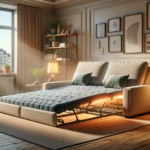Understanding Synthetic Turf: A Modern Solution
Synthetic turf, often referred to as artificial grass, is a surface made from synthetic fibers designed to resemble natural grass. Initially popularized for sports fields, its use has expanded to residential lawns, commercial spaces, and indoor settings. This modern solution offers an aesthetically pleasing and low-maintenance alternative to traditional grass, which requires regular watering, mowing, and fertilizing. The evolution of synthetic turf has seen advancements in materials and technology, making it more durable and realistic than ever before.
The primary components of synthetic turf include the backing, which supports the fibers, and the infill, which helps maintain the structure and provides cushioning. These elements work together to create a product that not only looks like natural grass but also feels comfortable underfoot. The infill, often made from sand or rubber, provides stability and helps the blades stand upright. This design mimics the natural resilience of grass, offering a similar experience without the upkeep.
One of the significant advantages of synthetic turf is its versatility. It can be used in various climates and settings, from arid regions where water conservation is crucial to urban areas where green space is limited. This adaptability makes synthetic turf an appealing option for those looking to enhance their environment with minimal environmental impact.
The Environmental Impact of Synthetic Turf
As environmental concerns continue to grow, the impact of synthetic turf on the environment is a topic of interest for many. One of the most notable benefits is its water-saving potential. Traditional grass lawns require significant amounts of water to maintain their lush appearance, especially in dry climates. In contrast, synthetic turf eliminates the need for watering, contributing to water conservation efforts.
Additionally, synthetic turf reduces the need for chemical fertilizers and pesticides, which can have harmful effects on local ecosystems. By eliminating these chemicals, synthetic turf helps promote a healthier environment while reducing pollution. This reduction in chemical use is particularly beneficial in residential areas, where runoff can affect local water sources.
However, there are environmental considerations to be aware of. The production and disposal of synthetic turf involve the use of non-renewable resources and can contribute to landfill waste. To mitigate these concerns, some manufacturers are exploring more sustainable production methods and recycling programs. By choosing synthetic turf products made from recycled materials, consumers can further reduce their environmental footprint.
Cost and Maintenance: A Comparative Analysis
When considering synthetic turf, cost and maintenance are significant factors for many homeowners and businesses. Initially, the installation of synthetic turf can be more expensive than seeding or sodding a natural lawn. However, the long-term savings often outweigh the upfront costs. Without the need for regular mowing, watering, or fertilizing, maintenance expenses are significantly reduced.
Over time, the cost savings from reduced water bills and lawn care services can make synthetic turf a financially sound investment. Additionally, synthetic turf has a long lifespan, often lasting 15 to 20 years with proper care. This durability means fewer replacements and less frequent maintenance, further enhancing its cost-effectiveness.
Maintenance of synthetic turf is straightforward and involves regular brushing to keep the fibers upright, occasional rinsing to remove dust and debris, and infill replenishment as needed. This low-maintenance approach appeals to those seeking a hassle-free solution for their outdoor spaces.
Design and Aesthetic Possibilities
Synthetic turf offers a wide range of design possibilities, allowing for creativity and personalization in outdoor and indoor spaces. Available in various shades, textures, and blade lengths, synthetic turf can be tailored to match specific aesthetic preferences. This flexibility makes it suitable for diverse applications, from residential gardens to commercial landscapes.
For homeowners, synthetic turf can transform backyards into lush, green oases without the upkeep of natural grass. It can be used to create inviting play areas for children and pets, ensuring a safe and clean environment. In commercial settings, synthetic turf can enhance the appearance of office complexes, retail spaces, and public parks, providing a welcoming atmosphere for visitors and clients.
Indoor applications of synthetic turf are also gaining popularity, particularly in urban environments where outdoor space is limited. It can be used to create green walls, indoor gardens, or unique office environments that promote relaxation and well-being. The versatility of synthetic turf allows for endless design possibilities, making it a valuable tool for architects and designers.
Making the Decision: Is Synthetic Turf Right for You?
Deciding whether synthetic turf is the right choice involves considering several factors, including environmental impact, cost, maintenance, and aesthetic preferences. For those living in areas prone to drought or with limited access to water, synthetic turf offers a practical solution that conserves water and reduces maintenance.
Additionally, individuals seeking a low-maintenance alternative to natural grass will find synthetic turf appealing. Its durability and long lifespan make it a worthwhile investment for those looking to reduce lawn care efforts and expenses. However, it’s essential to weigh the environmental considerations, such as production and disposal impacts, and explore options that align with sustainability goals.
Ultimately, the decision to install synthetic turf should be based on a careful assessment of personal needs, environmental values, and budget. By considering these factors, homeowners and businesses can make informed choices that enhance their spaces while supporting their lifestyle and environmental objectives.








